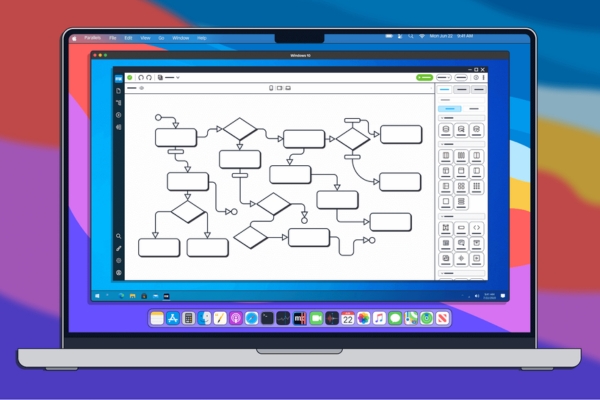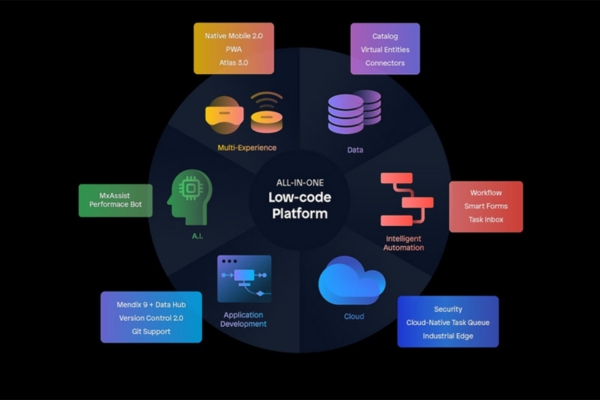Low-code platforms have moved beyond being the newcomers in the tech landscape. By 2025, it’s projected that 70% of new applications will emerge from no-code or low-code solutions, highlighting low-code’s vital role in enterprise app development.
As you think about integrating low-code, what’s fueling those discussions? Is it a clear understanding of its current capabilities, or are lingering misconceptions from the past still influencing your perspective?
There are numerous low-code myths recently. If you’re relying on outdated beliefs, you might be hindering your progress. Let’s uncover and address those myths.

1. Low-code is only for simple applications
Many people associate low-code with basic automation and believe it’s inadequate for more complex tasks. While this may hold true for certain no-code platforms, it’s not the full picture.
Platforms like Mendix are capable of addressing even the most sophisticated use cases in enterprise environments. Need to develop customer portals? No problem. Want to integrate diverse data sources? Absolutely feasible.
A prime example is Schwarz Group, which leveraged Mendix to create a decentralized development capability, effectively digitizing processes across its retail value chain.
2. Low-code limits my deployment options
Your requirements are unique. Whether you prefer a public cloud, need a private cloud, want to secure everything on-premises, or have other preferences, your enterprise deserves a platform that meets your current needs while also offering flexibility for the future.
Consider how your future use cases and desired endpoints can influence your platform choice. While it’s true that some low-code platforms may have limited flexibility, don’t generalize this to all platforms.
Transform your ideas into reality with our services. Get started today!
Our team will contact you within 24 hours.
3. Low-code doesn’t play nicely with sensitive data
Data is one of your most valuable assets. It informs your decisions and shapes your experiences, and it plays a crucial role in leveraging artificial intelligence and GenAI.
Equally important is the security of that data. You can’t afford to compromise it, so any platform that risks exposing your data is not a viable option.
Low-code platforms that fail to securely consolidate and synthesize your data won’t enable you to maximize its potential. While some may fall short, others excel in this area.
4. Low-code is merely a tool for business users to experiment with
The terms “low-code” and “citizen development” are frequently mentioned together, and for good reason. Low-code platforms streamline the development process, and citizen developers have a long history of creating solutions with them. However, if you’re only leveraging low-code for this purpose, you’re not fully unlocking its potential.
Is low-code ideal for rapid iteration and prototyping? Absolutely! Is there a place for citizen developers and business technologists? Without a doubt.
However, to fully harness the power of low-code, you need collaboration tools that facilitate seamless interaction between business and IT. Additionally, portfolio management tools are essential for gaining a comprehensive view of enterprise activities. With these in place, you can deploy both business and development teams more efficiently, minimizing redundant work and maximizing value.

5. Low-code lacks focus on security and governance
Continuing the discussion, citizen development is often associated with shadow IT and weak governance.
While collaboration and portfolio management are crucial, they must be supported by strong governance and security practices to accelerate development without losing control.
The most effective platforms integrate tools that simplify governance and enforce processes, ensuring comprehensive coverage throughout the development lifecycle.
6. Low-code isn’t suited for customer-facing applications
You must create winning customer experiences to stand out and stay ahead of the competition. So, it stands to reason that a platform that struggles with elegant experiences and interfaces will have limited value to you. Why settle?
7. All low-code platforms are essentially the same
If you’ve had this thought, we happily forgive you, but one size does not fit all when it comes to low-code.
Think of it this way. Picture a bowl of noodles. What do you see? Spaghetti carbonara? Pho? Vermicelli? Boxed macaroni and cheese? They’re all noodles but that’s about where the similarities stop. They’re not trying to taste the same and will offer differing satisfaction levels depending on your needs.
Low-code is the same way. There are many varieties of platforms to fit your use cases.

Kyanon Digital is a leading low-code development company in Vietnam, known for its expertise in delivering innovative digital solutions. By leveraging cutting-edge low-code platforms, Kyanon Digital empowers businesses to accelerate their digital transformation with scalable, efficient, and cost-effective solutions.
With a strong focus on collaboration, security, and governance, Kyanon Digital stands out as a trusted partner for companies seeking to streamline their development processes and drive growth in the fast-evolving tech landscape. Contact us for more information about low-code development!

















